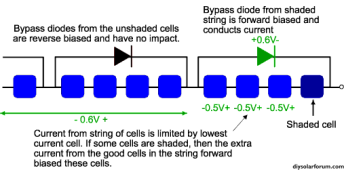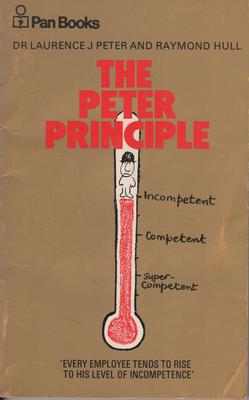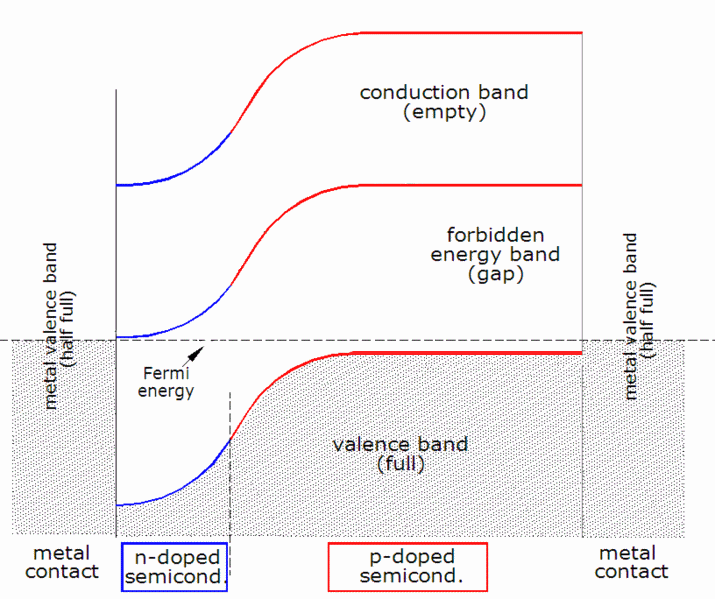It is just current that causes bypass diode to activate.
Each photocell is a forward-biased diode, and bypass diodes are placed in reverse orientation every 24 or so cells.
When PV panel string is open-circuit, all cells and panels are at their open-circuit voltage.
Each cell produces current proportional to the amount of light it receives.
When open-circuit, voltage across the cell (a forward-biased diode) increases until current conduction through the cell equals the current produced (Voc). It is an exponential curve, so slight increase in voltage drastically increases the current. The voltage is approximately 0.7V per cell. (upper right quadrant)
View attachment 179895
If you put a load (such as a resistor) across the photocell, some current flows through the load, leaving less to flow back through the cell (diode), and voltage is reduced. At some load, this will be Vmp and current is Imp.
If you put a short across the cell (or PV panel), all current produced (Isc) flows through the short, none through the photocell, and voltage is zero.
Instead of a load, you can force current through the photocell (PV panel). If between 0A and Isc, the voltage will be between Voc and 0V. If you force more than Isc (or more than a partially shaded panel can produce), current would try to flow through the photodiode (lower left quadrant). At some voltage, high current flows and heating would damage the photocell.
That is where bypass diode comes in. At about 0.7V, the bypass diode carries all the current. Most PV panels have 3 diode bypassed sections, so 2.1V drop across the panel.
View attachment 179897
Problem is, bypass diodes get hot. At 10A x 0.7V, 7W per diode is dissipated. If not designed for sufficient cooling, the diode will overheat, short (but resistive short), burn the panel. Therefore, avoid shadows when panel is aimed directly at the sun. Probably fine at 45 degree angle from the side.
If a panel produces a bit less current than others, MPPT may let voltage rise and other panels deliver more voltage and a matching amount of current. If it produces substantially less current, MPPT should pull voltage lower and the high current of other panels is forced through its bypass diode. Whatever current the partially shaded panel produces also goes through its bypass diode.







